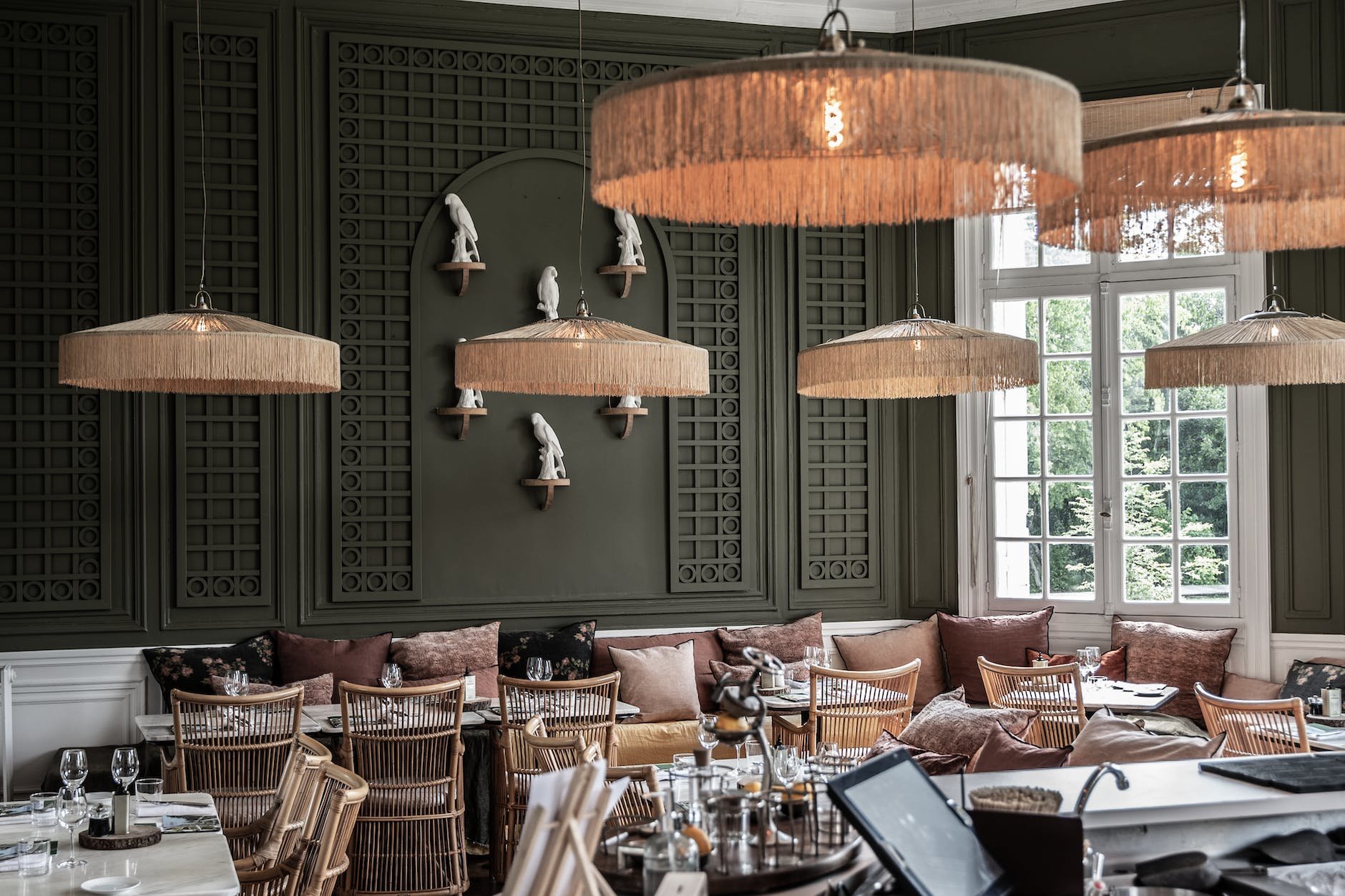Coming up with the idea for your restaurant is the easy part. Now you have to figure out how to make it work. According to recent studies, the restaurant industry has a 20% success rate, meaning 80% of new restaurants fail within the first five years. However, every single restaurant that succeeds has a solid business plan. That's why it's crucial for future restaurateurs and restaurant entrepreneurs to write a comprehensive business plan that outlines their vision, goals, and strategies for success.
In this article, we'll show you why a business plan is so important for your restaurant's success and provide you with step-by-step guidance on how to write a winning business plan.
Why You Need To Write a Restaurant Business Plan
Every new business should start with a business plan, and a restaurant is no exception.
A restaurant business plan is a comprehensive document that serves as a roadmap for the business, detailing the strategy, objectives, and operational plans for starting and running a restaurant.
Writing out a business plan will provide clarity on all aspects of your restaurant business. It will force you to ask difficult questions about your business, including those regarding your business model, value proposition, and overall viability.
Creating a business plan helps you create a roadmap for business success and allows you to spot any potential problems early.
By detailing what’s expected and what’s going to happen, a business plan also creates accountability for yourself and any partners you might have.
Additionally, without a business plan, it’s highly unlikely that you’ll be able to secure investors for your restaurant. Even if you do secure funding (or fund the business yourself), not having a detailed plan will only set you up for failure.
7 elements of a restaurant business plan
Here are the seven elements you should include when writing your restaurant business plan:
1. Executive summary
Your business plan should start with an executive summary.
You can think of this section as a bird’s eye view of your business plan. Its goal is to provide a shorter version of your business plan that entices the reader to read the plan in its entirety.
It’s one of the most important sections in your business plan. For some investors, it’s going to be the only part of your business plan they read.
The executive summary should include information about the restaurant concept, your target market and mission statement, potential costs, high-level growth plans, and the expected return on investment.
Keep in mind that, while this is the first section of your business plan, you should write it at the end, after you’ve fleshed out all the other sections of your business plan.
2. Restaurant concept
In this section, you’re going to describe the overall concept of your restaurant, including what kind of food you’ll be serving and how your restaurant is going to look and feel.
Describe the decor, ambiance, and even the type of music you plan on playing at the restaurant in detail. Explain the reasoning behind designing your restaurant in this way and why you think it will appeal to your target customers.
When writing this section, make sure to provide an overview of the service style (e.g., fast food, fast-casual, or fine dining), explain how the restaurant will be run, and try to paint a picture of how your restaurant will make guests feel.
You should explain what’s the inspiration behind the concept, what’s unique about it, and why you think it’s going to result in a successful restaurant.
This section is also a good place to add a sample menu with menu items (both food and drinks) you plan on offering, as well as their respective prices.

3. Market analysis
Every good business plan includes a market and industry analysis.
In this section, you should detail the economic and market conditions, both locally and regionally. This will require extensive market research.
If restaurants in the area are doing poorly in general, you’ll need to provide an explanation for why yours will do well.
On the other hand, if the restaurant industry is booming in your area, you’ll have to explain why you think a new restaurant will be able to compete.
You also need to include a detailed competitive analysis. What other restaurants will you be competing with? What kind of competitive advantage do you anticipate having?
Ideally, you should find a way to prove that there is demand for the type of restaurant you’re looking to open.
This is the place where you can include a SWOT analysis, going over your business’ strengths and weaknesses, as well as describing any potential opportunities and threats.
4. Target customers
Your restaurant’s business plan should also describe what type of customers you’re looking to attract to your restaurant.
Make sure to describe your target demographic, including your customers':
- Age range
- Income levels
- Occupation
- Dining and spending habits
Finally, explain why your restaurant will be appealing to your target customers.

5. Location
Your restaurant business plan should also include the future location of your restaurant. If you don’t have a specific site identified, you’ll want to mention what you’re looking for in terms of:
- Square footage
- Foot traffic
- Parking
You should also mention the neighborhoods you’re considering for your restaurant location and explain why these would be suitable for your restaurant.
6. Marketing
Your restaurant can’t rely on foot traffic alone. You should also make an active effort to promote it. That’s why you need to include a section on your marketing plan.
In this section, explain your overall restaurant marketing strategy and list the marketing channels (e.g., social media, PPC advertising, etc.) you plan on using. You don’t need to include a step-by-step plan, but you’ll want to provide a general idea of how you plan to approach marketing.
If you’re going to hire a marketing agency, you can introduce it in this section.
7. Financials
For most investors, this will be the section of your plan they will be interested in the most.
It’s so important that it might be wise to hire an accountant to help you write it.
If you decide to do so, you’ll want to provide them with details like the number of seats your restaurant will have, the projected number of guests per day, and the average check size you anticipate, so that they can create accurate financial projections.
If possible, try to find an accountant with experience doing bookkeeping and accounting for restaurants.
You’ll want to include the following information in this section:
- Investment plan – Your investors will want to see how you’re going to spend their investment. Here, you’ll want to list expenses such as rent, furniture, kitchen equipment, payroll, and marketing.
- A break-even analysis – This analysis will show how much revenue you need to generate every month to break even after accounting for all expenses.
- Projected profit and loss statement for the first 1-3 years – The purpose of a projected P&L statement is to show investors how much money you expect to make (or lose) in your first year (or three).
When including estimates, it’s always best to be conservative because you’ll be relying on these numbers to determine whether your restaurant idea is financially viable.
A sample of a restaurant business plan
Executive Summary
The Happy Plate is a family-friendly, fast-casual restaurant specializing in wholesome, affordable meals in a cozy, modern atmosphere. Our mission is to provide delicious, nutritious food in a welcoming environment for families and individuals of all ages. Located in the vibrant downtown area, we anticipate a high foot traffic location and aim to become a popular dining spot for locals and tourists alike. Our growth plans include expanding to multiple locations within the next five years. The estimated cost of opening The Happy Plate is $300,000, and we expect a return on investment within the first two years of operation.
Restaurant Concept
The Happy Plate offers a unique dining experience, combining fresh, nutritious meals with a fast-casual service model. Our menu focuses on locally-sourced, organic ingredients, and our dishes cater to various dietary preferences, including vegetarian and gluten-free options. The restaurant's design features a contemporary, inviting atmosphere with warm colors, comfortable seating, and soft lighting. Soothing instrumental music will play in the background to create a relaxing environment for our guests.
Inspired by the growing trend of health-conscious dining, The Happy Plate sets itself apart by offering delicious, wholesome meals at affordable prices. We believe our commitment to quality and exceptional service will attract a diverse clientele and ensure our restaurant's success.
Market Analysis
Our extensive market research indicates a growing demand for healthy dining options in our target location. The downtown area has experienced an influx of young professionals and families, leading to increased interest in accessible, nutritious meals. While there are several restaurants in the area, few focus on healthy, fast-casual dining, giving The Happy Plate a competitive advantage.
Our SWOT analysis indicates that our strengths lie in our unique menu, commitment to quality ingredients, and fast-casual service model. Potential weaknesses include initial startup costs and the competitive nature of the restaurant industry. Opportunities include the increasing demand for healthy dining options, potential for partnerships with local farmers and businesses, and expansion possibilities. Threats may include economic downturns, changing consumer preferences, and new competitors entering the market.
Target Customers
The Happy Plate aims to attract a diverse clientele, including young professionals, families, and health-conscious individuals. Our target demographic includes:
- Ages 18-60
- Middle to upper-middle income levels
- Working professionals
- Health-conscious and environmentally aware individuals
- Customers who prioritize convenience and affordability
Our menu and dining experience will appeal to our target customers by offering a wide range of options, exceptional service, and a welcoming atmosphere.
Location
We are currently considering several prime downtown locations for The Happy Plate, prioritizing areas with high foot traffic, ample parking, and at least 2,000 square feet of available space. Our ideal location will be easily accessible to locals and tourists alike and situated near popular shopping and entertainment destinations.
Marketing
To promote The Happy Plate, we will implement a comprehensive marketing strategy utilizing various channels, including social media, local print advertisements, and targeted online advertising. We will also participate in community events and partner with local businesses to increase brand awareness and establish a strong presence in the local market. A professional marketing agency with experience in the restaurant industry will be contracted to assist with our marketing efforts.
Financials
To ensure accurate financial projections, we will work with an experienced accountant specializing in restaurant bookkeeping and accounting. Our financial plan includes:
- Investment plan: Restaurant startup costs of $300,000 will cover rent, furniture, kitchen equipment, payroll, and marketing expenses.
- Break-even analysis: We anticipate generating sufficient restaurant revenue to cover all expenses within the first two years of operation.
- Projected profit and loss statement: Our conservative estimates project a net profit of $50,000 in the first year, increasing to $100,000 and $150,000 in the second and third years, respectively. These projections are based on an estimated 150 guests per day with an average check size of $20.
By providing a unique dining experience focused on quality, affordability, and exceptional service, we believe The Happy Plate will become a leading choice for dining in our target market. We look forward to the opportunity to share our passion for healthy, delicious food with our community and to contribute to the vibrant local dining scene.
A restaurant business plan is crucial for the success of your restaurant
Future restaurant owners need to write a business plan to determine whether their restaurant idea is viable and get potential investors interested.
When creating your restaurant business plan, make sure to include the seven sections we outlined above.
FAQs
How long should a restaurant business plan be?
The length of a restaurant business plan can vary depending on various factors, including the complexity of your concept, the level of detail you want to include, and the specific requirements of your audience (e.g., investors, lenders, partners). However, a typical restaurant business plan usually ranges from 15-20 pages.
What is the final part of a restaurant business plan?
The final section of a restaurant business plan typically covers financial projections and funding requirements, as well as any supporting documents or appendices.
When should I write a restaurant business plan?
You should write a restaurant business plan before you start your restaurant, as it serves as a roadmap for your venture. It helps you clarify your concept, set goals, secure financing, and make informed decisions. A well-thought-out business plan is crucial during the planning and startup phases of your restaurant.

Boris Mustapic is a content marketer with a decade of experience in the digital marketing industry. He specializes in helping B2B SaaS companies drive growth through strategic, product-led content marketing.
More about the author